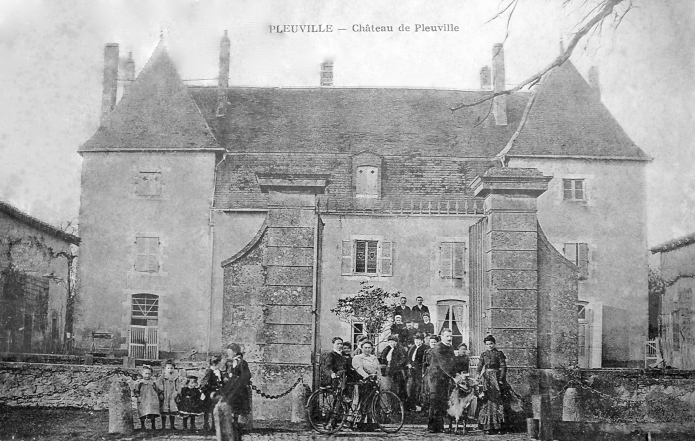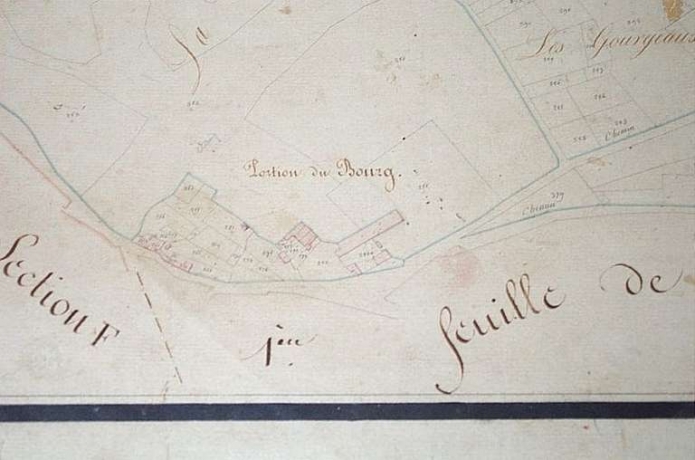Who built the chateau and when?

In the late 18th century the Duverrier de Boulzat family owned Pleuville village, including the land on which Château de Pleuville is built, and extensive property in the surrounding area. They were based at Château de Gorce, about two kilometres south of the village, and most local people would have been, or would have worked for, their tenants. The coat of arms on the gatehouse at Gorce was defaced by rioters during the French Revolution in 1789, when no doubt many of the local aristocracy decided to make themselves scarce. But rather than emigrating, Pierre-Jacques Duverrier succeeded in retaining the Pleuville properties, and in purchasing numerous others which had been taken over by the state, having been abandoned or forfeited by their former owners. The revolutionary government established the system of departments and communes which we know today, and Pierre-Jacques became mayor of the new commune of Pleuville, retaining this position until his death in 1829. One of his children, Antoine, inherited the Pleuville properties.

In 1807 Napoleon initiated the first detailed cartographic survey of the whole of France. The Charente department was one of the earlier regions to be surveyed once the project got going and Pleuville was done in 1825 (see note 1). One of the maps of Pleuville village shows a long rectangular building where Château de Pleuville now stands, and it appears this building was adapted and raised in height to form the present structure, some time after 1825. Today we can see clear differences in stonework which appear to confirm that most of the south-east courtyard front, and parts of the end walls facing north-east and south-west, were retained from the older building. The north-west front which faces the park was newly constructed, as were the present three large “granges” (multi-purpose barns), the main gateway, and the moat, which are not present on the 1825 map. The age of the earlier long building is not known (2).
In about 1830 Antoine Duverrier’s daughter Marie-Emma-Séraphine (1810-1886) married Jean-Joseph Favre d’Echallens (1801-1886). It has been plausibly suggested that this couple rebuilt the chateau as their new summer residence (3). However they first appear as residents in “Le Bourg” (the village centre) only in the 1872 census, with a household of five further people. So perhaps we can assume that the chateau was rebuilt by or for them, but not until the 1860s. The style of surviving interior fittings and the general appearance and condition of the buildings would support this. Pleuville church was also rebuilt in these years, with support from the Favres, and it seems probable that they had decided to return or retire to a base in Pleuville while continuing to spend part of the year at their house in Poitiers. They feature in the 1876 Pleuville census with a household of eight; Jean was mayor of Pleuville for a time; and Séraphine’s grave in Pleuville cemetery is inscribed “décédée en son château de Pleuville le 14 Mai 1886”. The family’s link with Pleuville continued at least until the 1930s, but at some point the chateau was sold and it has had a number of owners and occupants since.
Notes
- The Charente maps (mostly 1/2500 scale) can be consulted online
- 17th century references to a house which may have been on the present site are given in Châteaux, logis et demeures anciennes de la charente (2005), where the current chateau is described as of 18th century origin with much 19th century alteration.
- L’inventaire de la Communauté de communes du Confolentais (2007, http://www.charente-limousine.fr/adhoc/confolentais/patrimoine/html/IA16001982.html).

